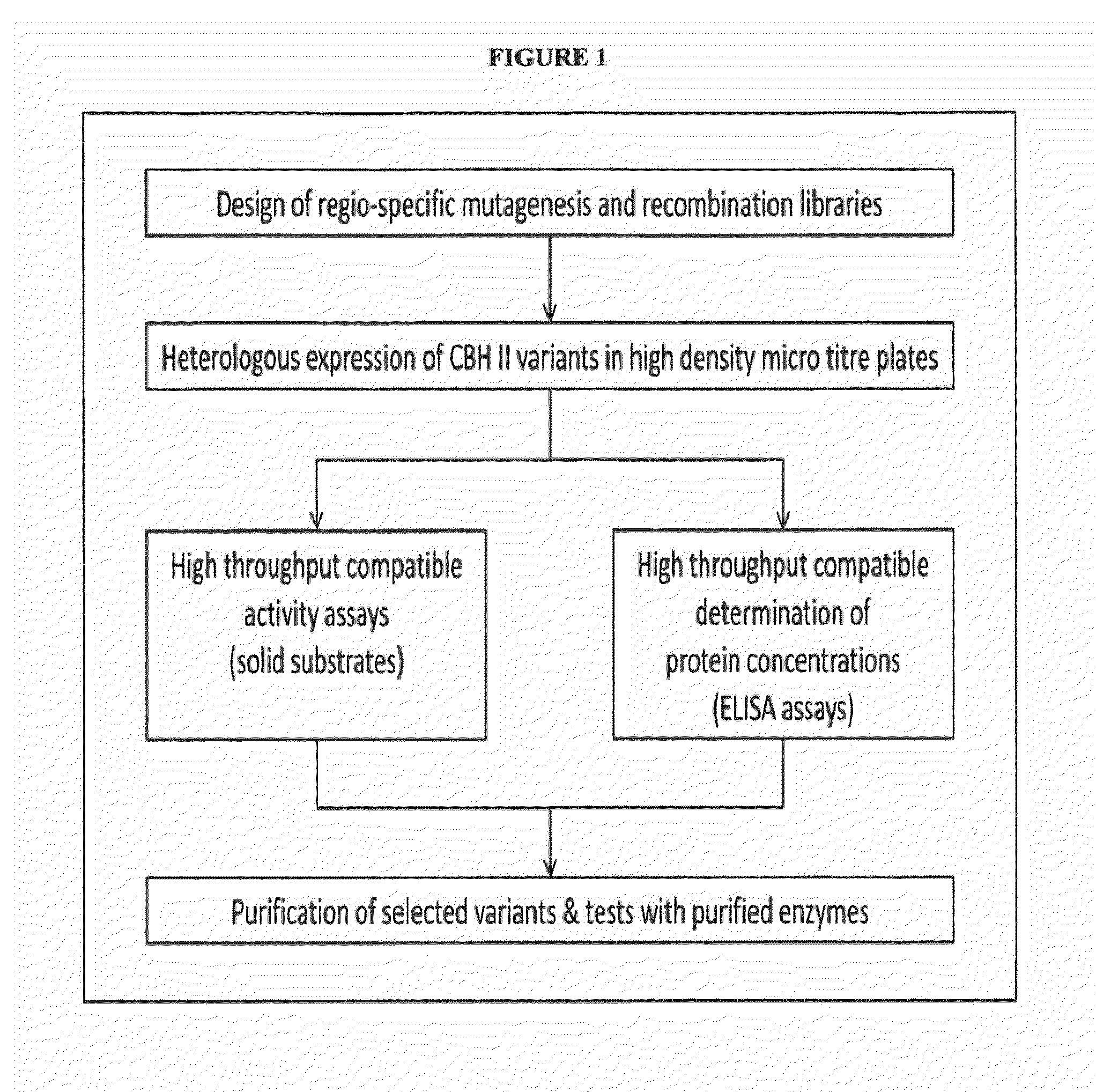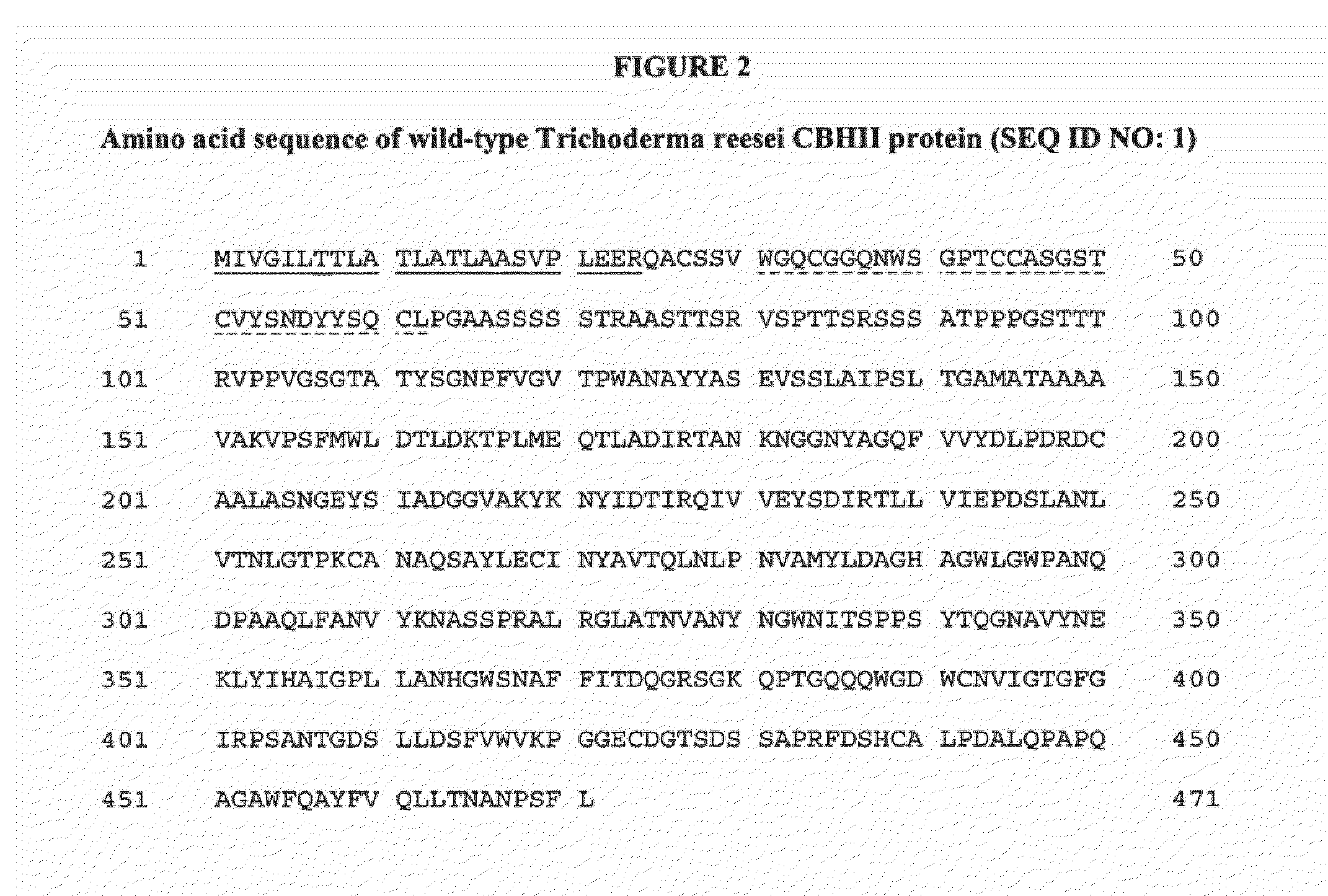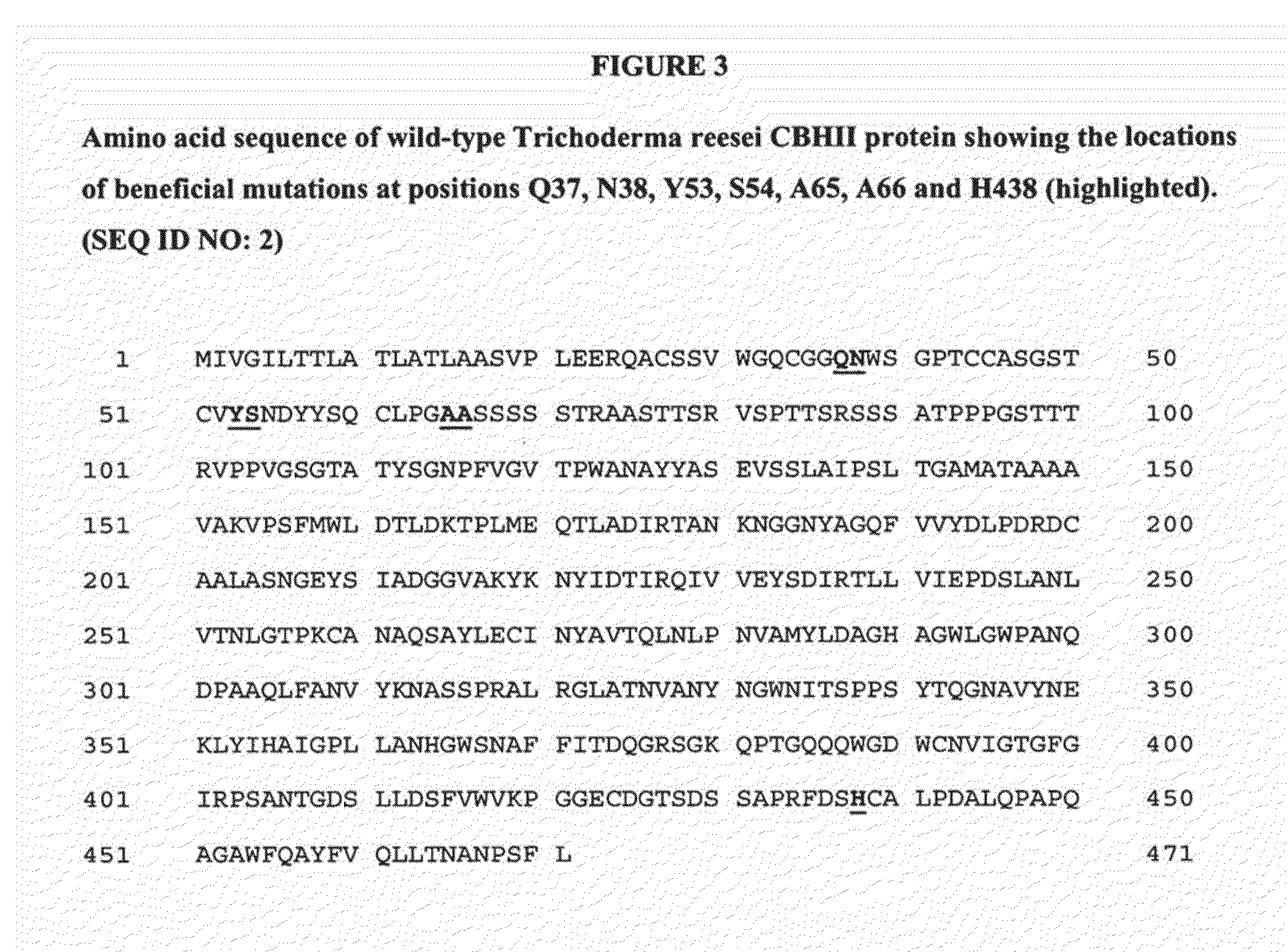Polypeptides having cellobiohydrolase ii activity
- Summary
- Abstract
- Description
- Claims
- Application Information
AI Technical Summary
Benefits of technology
Problems solved by technology
Method used
Image
Examples
example 1
Identification of CBHII Activity as a Key Limiting Activity During Hydrolysis of Biomass
[0182]Cellobiohydrolyses play a critical role during depolymerisation of cellulose polymers present in a variety of plant or microbial material. These processes require the complementary action of Cellobiohydrolases, Endoglucanases and Beta-Glucosidases.
[0183]To determine the most limiting enzyme activity during hydrolysis of a given biomass (e.g. pretreated wheat straw) the concentrations of individual enzymes were varied in synthetic mixtures. Increased CBHII concentrations led to increased overall performances of the whole hydrolysis mixtures. Table 1 summarizes these results:
TABLE 1Increase of CBHIIconcentration in artificialIncrease of glucose liberationhydrolysis mixturesfrom pretreated wheat straw3x27%7x46%11x 73%
[0184]The reactions were started with 20% pretreated wheat straw and run for 18 h at 45° C. Artificial hydrolysis mixtures contained 1 mg / gram dry substance of the commercial enzy...
example 2
Cloning of the Trichoderma reesei CBH2 Gene
[0185]Chromosomal DNA was isolated from Trichoderma reesei strain RutC30 after growth on YPD agar plates (20 g Peptone, 10 g Yeast Extract brought to 1 l with water, stirred, 20 g Agar; 1 / 10th volume of 20% dextrose was added after autoclaving). About 10 mg of biomass was scraped from the plate, combined with 0.2 ml glass beads (0.5 mm diameter) and 500 ml of a 24:24:1 mixture of phenol:chloroform:isoamyl alcohol and vortexed 2-5 min, followed by centrifugation at 10000-15000×g. The supernatant was transferred to a new tube and ethanol precipitated. The pellet was resuspended in 20 ml water. The resulting DNA (2 microlitres) was used as template in three PCR reactions using Taq DNA polymerase and containing Primerpairs CBH—01_for (SEQ ID NO 3) / CBH—02_rev (SEQ ID NO 4), CBH—03_for (SEQ ID NO 5) / CBH—04_rev (SEQ ID NO 6) and CBH—05_for (SEQ ID NO 7) / CBH—06_rev (SEQ ID NO 8). The PCRs were run with the following cycling parameters: 94° C., 2 mi...
example 3
Transformation of S. cerevisiae by Lithium Acetate
[0186]Frozen stocks (cryostocks) were first generated as follows: A 15 ml preculture of BY4741 was generated in YPD in a 50 ml Erlenmeyer flask incubated at 30° C. and 150 rpm overnight. 10 ml of this culture were used to inoculate 100 ml pre-warmed YPD in a 500 ml Erlenmeyer flask incubated at 30° C. and 150 rpm until an optical density at 600 nm of 6-8 was reached. This culture was mixed with an equal volume of 30% glycerol and stored in 1.6 ml aliquots at −80° C.
[0187]Generation of competent cells: 50 ml YPD was inoculated to an initial optical density at 600 nm of 0.5 using cryostocks (above), or using a fresh overnight YPD preculture (above). The 50 ml culture was incubated at 30° C. at 150 rpm 2-4 h until an optical density at 600 nm of 1.0 was reached. The culture was then centrifuged at 1500×g at 20-25° C. for 5 min. The supernatant was discarded and the pellet was resuspended in 20 ml sterile water and centrifuged 5 min at 2...
PUM
| Property | Measurement | Unit |
|---|---|---|
| Fraction | aaaaa | aaaaa |
| Fraction | aaaaa | aaaaa |
| Fraction | aaaaa | aaaaa |
Abstract
Description
Claims
Application Information
 Login to View More
Login to View More - R&D
- Intellectual Property
- Life Sciences
- Materials
- Tech Scout
- Unparalleled Data Quality
- Higher Quality Content
- 60% Fewer Hallucinations
Browse by: Latest US Patents, China's latest patents, Technical Efficacy Thesaurus, Application Domain, Technology Topic, Popular Technical Reports.
© 2025 PatSnap. All rights reserved.Legal|Privacy policy|Modern Slavery Act Transparency Statement|Sitemap|About US| Contact US: help@patsnap.com



